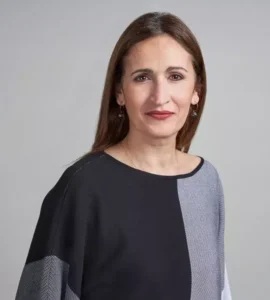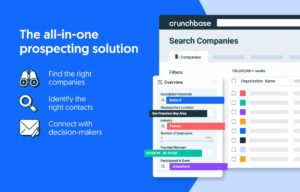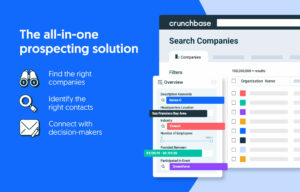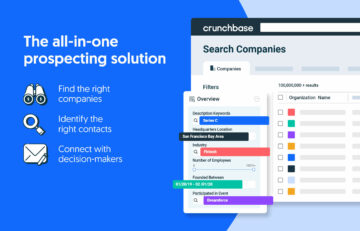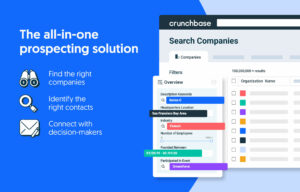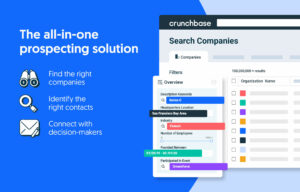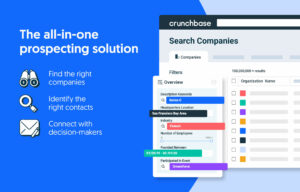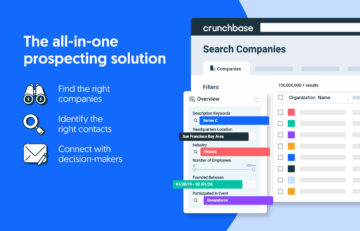Editor’s note: This is the first in a two-part series on the state of seed startup investing at the start of 2024. Check back tomorrow for Part 2.
Despite a broad pullback in global startup investment over the past two years, investors say the U.S. seed funding environment was the most vibrant compared to other funding stages during the downturn.
In fact, U.S. seed funding in 2022 grew by close to 10% in terms of dollars invested, in contrast to a downturn at all other funding stages. In 2023, U.S. seed funding fell 31% — a significant proportion — but still less than other funding stages year over year, an analysis of Crunchbase data shows. (It’s also worth noting that those other stages had already experienced year-over-year declines in 2022.)
In the current startup funding market, “we’re seeing a lot more great talent excited about starting things,” said Renata Quintini, co-founder of Renegade Partners, a Bay Area-based investment firm that focuses on Series A companies and is therefore close to the seed ecosystem.
Other investors share that enthusiasm. “Valuations are coming down, more talent is available in the market,” said Michael Cardamone of New York-based seed investor Forum Ventures. “A lot of these companies at seed and Series A are going to scale into what will likely be the next bull market.”
Seed trends over the decade
Seed as an asset class, not surprisingly, has grown in the U.S. over the past decade. In 2014 less than $5 billion was invested at seed. At the market peak in 2022, seed investment was more than $16 billion, although it fell to $11.5 billion in 2023.
Despite the downturn, seed funding in 2023 was still $2 billion to $3 billion higher in the U.S. than in the pre-pandemic years of 2019 and 2020.
Higher bar, pricier rounds, better valued
But in a tougher market, seed investors are being more selective about which companies they fund.
“We’re being far more disciplined and patient knowing how hard it is for these companies to get to Series A and beyond,” said Jenny Lefcourt, a general partner at Bay Area-based seed investor Freestyle Capital. “Our bar for conviction is higher than it had been in the heyday where everything was getting funded.”
In the slower funding environment, the firm has been investing later at the seed stage, “gravitating toward ‘seed plus’ or ‘A minus’ — pick your favorite term for it — because I feel like I get to see more risk mitigated. I get to see more data,” she said.
Freestyle seeks to have ownership of around 12% to 15% in the companies it backs. “The reason is because of our model,” Lefcourt said. “We are low-volume, high-conviction investors.”
And because the firm invests in companies that are pre-Series A, “our reality has been that our valuations have actually been higher in this market, which is not what we would have predicted.
“But the data we’ve seen is, we’re not alone in that,” she said.
Series A matures
Before they get to Series A, “companies are executing for longer. They are derisking more,” said Quintini, who sees more mature companies leaning into raising Series A funding in this market.
Over the past decade, the typical time for U.S. startups between seed funding and Series A has grown, Crunchbase data shows. For a Series A closed in 2014, the median time following a startup’s first seed at $1 million or above was 14 months. In 2020, that increased to 24 months.
In the peak market of 2021 and into 2022, the median time shortened a bit again, to 22 months, in each year.
But in 2023, the median time between a $1 million-plus seed and a Series A jumped to 28 months.
However, Quintini notes, “venture is an industry of outliers that neither the median nor the average will give you an actual, true picture.”
We compared the median time to raise with the top quartile that raised a Series A from the first seed round of $1 million. The top quartile did so in less than 12 months, except for Series A rounds in 2023.
In the earlier part of the decade, fewer companies reached that milestone but raised their Series A faster.
In 2021, the top quartile sped up to eight months.
In 2023, the top quartile companies took 12 months to get to Series A from an initial seed of $1 million.
“We accelerated the [Series] A because people don’t want to be left out of the outliers,” said Quintini. In this market, we are seeing less preemption, when investors would invest nine months into the life of the seed company — with the exception of AI, she said.
That sentiment was mirrored by Cardamone. “We had a lot of companies that would get to an A within nine to 12 months easily. And I think that’s just going to change.”
As companies take longer to get to Series A and face a higher bar for fundraising, “there’s going to be a higher death rate, a much lower percentage of companies getting to [Series] A, which means a harder job for seed investors now, even though they have more information to underwrite with,” said Cardamone.
Methodology
For U.S. seed funding we include angel, pre-seed, seed as well as equity crowdfunding and convertible notes at or below $3 million. For this analysis, we excluded seed funding of $100 million and above.
Illustration: Dom Guzman


Stay up to date with recent funding rounds, acquisitions, and more with the Crunchbase Daily.
Buying a startup can work out very well. But while success stories happen, it’s also true that many purchases work out badly. We take a look at some...
Voice AI startup ElevenLabs raised an $80 million Series B at a unicorn valuation as investor interest in all AI tech remains at an all-time high.
It is not surprising to hear crypto, blockchain and Web3 protocols fell out of favor with investors last year — however, venture dollar numbers show...
- SEO Powered Content & PR Distribution. Get Amplified Today.
- PlatoData.Network Vertical Generative Ai. Empower Yourself. Access Here.
- PlatoAiStream. Web3 Intelligence. Knowledge Amplified. Access Here.
- PlatoESG. Carbon, CleanTech, Energy, Environment, Solar, Waste Management. Access Here.
- PlatoHealth. Biotech and Clinical Trials Intelligence. Access Here.
- Source: https://news.crunchbase.com/seed/us-investment-held-up-forecast-2024/
- :has
- :is
- :not
- :where
- $1 million
- $100 million
- $3
- $UP
- 12
- 12 months
- 14
- 15%
- 2014
- 2019
- 2020
- 2021
- 2022
- 2023
- 2024
- 22
- 24
- 28
- a
- About
- above
- accelerated
- acquisitions
- actual
- actually
- again
- AI
- All
- alone
- already
- also
- Although
- an
- analysis
- and
- Angel
- ARE
- around
- AS
- asset
- asset class
- At
- available
- average
- b
- back
- backs
- badly
- bar
- Bay
- BE
- because
- been
- being
- below
- Better
- between
- Beyond
- Billion
- Bit
- blockchain
- blockchain and web3
- broad
- bull
- Bull Market
- but
- by
- CAN
- change
- check
- class
- Close
- closed
- Co-founder
- coming
- Companies
- company
- compared
- contrast
- conviction
- CrunchBase
- crypto
- Current
- daily
- data
- Date
- Death
- decade
- Declines
- DID
- disciplined
- Dollar
- dollars
- Dont
- down
- DOWNTURN
- during
- each
- Earlier
- easily
- ecosystem
- eight
- end
- enthusiasm
- Environment
- equity
- Even
- everything
- Except
- exception
- excited
- excluded
- executing
- experienced
- Face
- fact
- far
- faster
- favor
- Favorite
- feel
- fewer
- Firm
- First
- focuses
- following
- For
- from
- fund
- funded
- funding
- funding rounds
- Fundraising
- General
- General Partner
- get
- getting
- Give
- Global
- going
- great
- grew
- grown
- had
- happen
- Hard
- harder
- Have
- hear
- Held
- High
- higher
- How
- However
- HTTPS
- i
- in
- include
- increased
- industry
- information
- initial
- interest
- into
- Invest
- invested
- investing
- investment
- investor
- Investors
- Invests
- IT
- Job
- jpg
- just
- Knowing
- Last
- Last Year
- later
- left
- less
- Life
- like
- likely
- longer
- Look
- Lot
- lower
- many
- Market
- mature
- means
- milestone
- million
- model
- months
- more
- most
- much
- Neither
- New
- New York-Based
- next
- nine
- nor
- note
- Notes
- noting
- now
- numbers
- of
- on
- or
- Other
- our
- out
- over
- ownership
- part
- partner
- past
- patient
- Peak
- People
- percentage
- pick
- picture
- plato
- Plato Data Intelligence
- PlatoData
- pre-seed
- pre-Series A
- predicted
- pretty
- proportion
- protocols
- pullback
- purchases
- raise
- raised
- raising
- Rate
- reached
- Reality
- reason
- recent
- Recent Funding
- remains
- Risk
- round
- rounds
- s
- Said
- say
- Scale
- see
- seed
- Seed funding
- Seed Round
- seeing
- Seeks
- seen
- sees
- selective
- sentiment
- Series
- Series A
- Series A funding
- Series B
- Share
- she
- shortened
- show
- Shows
- significant
- So
- some
- Stage
- stages
- start
- Starting
- startup
- startup funding
- Startups
- State
- stay
- Still
- Stories
- success
- Success Stories
- surprising
- Take
- Talent
- tech
- term
- terms
- than
- that
- The
- The State
- their
- therefore
- These
- they
- things
- think
- this
- those
- though?
- time
- to
- tomorrow
- took
- top
- toward
- Trends
- true
- two
- typical
- u.s.
- unicorn
- us
- Valuation
- Valuations
- venture
- very
- vibrant
- want
- was
- we
- Web3
- WELL
- What
- when
- which
- while
- WHO
- will
- with
- within
- Work
- work out
- worth
- would
- year
- years
- you
- Your
- zephyrnet

